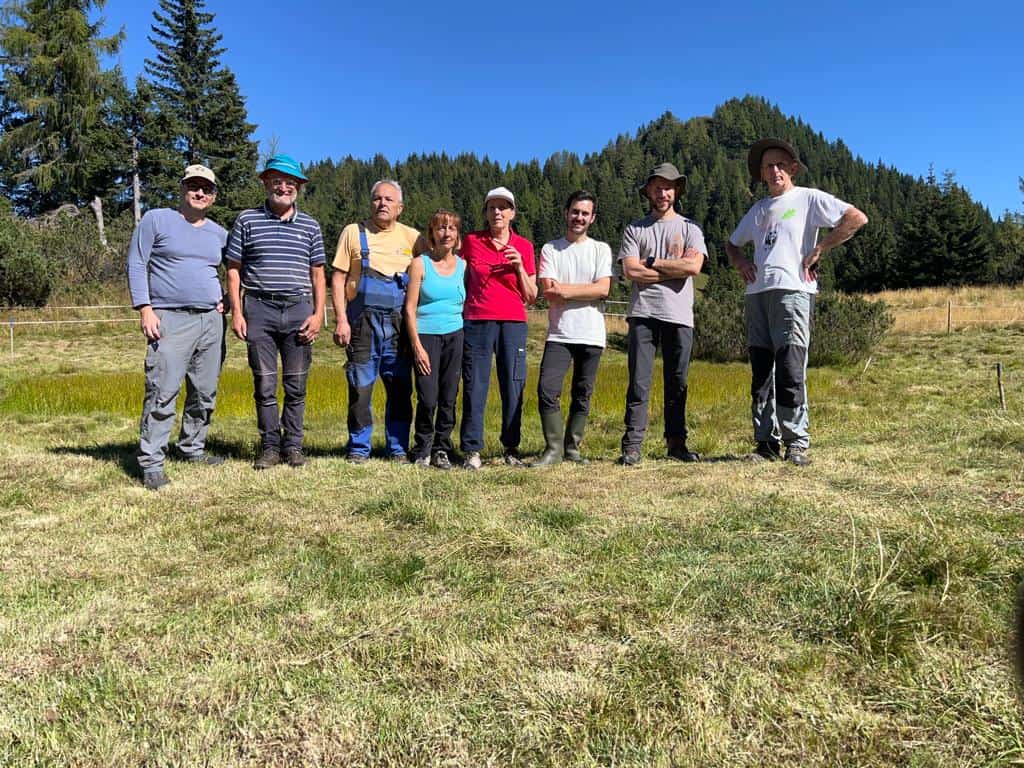On September 7th, staff from TESAF department and volunteers from Cadore-Italy (especially from the environmentalist group “Gruppo Promotore Parco delle Marmarole-Antelao-Sorapiss”) gathered in Pian dei Buoi to work on the wet prairie around Laghetto delle Sepolture. This pond and the wet prairie suffered from cattle trampling and eutrophication for many years. It has been protected during another project (“DL-Biotop”) and then became a project site for I-SWAMP.
We enclosed the site with an electric fence, to prevent cattle, horses and hogs from trespassing at the beginning of the season. On September 7th we mowed the prairie around the pond.
This action has two goals: first, reintroducing a disturbance, in an area that is not trampled or pastured; second, using this disturbance to reduce the competitive advantage of plant species that are favoured by eutrophication, trampling or herbivory. The action is necessary to favour less competitive species and reduce the presence of Deschampsia cespitosa, a common species that can become dominant in eutrophicated wet prairies.
We also mowed the sedge bed around the pond and removed some patches of aquatic vegetation (dominated by the drought-favoured Alopecurus aequalis). These intervention are needed to reduce the overgrowth of sedges (in this case, mostly Carex nigra) that can progressively invade the marshy area, and to favour a more diverse aquatic vegetation, reducing species that have been favoured by the past management.
Other sites have been fenced: three ponds in Costa della Spina and a pond in Vedorcia were fenced in order to avoid cattle trampling and reduce the impact from tourists.
A bog site in Polgét, in Pian dei Buoi, not far from Laghetto delle Sepolture, was fenced in order to reduce the impact of horses and cattle on Sphagnum hummocks colonised by Drosera rotundifolia.
Two more marsh/wet meadow sites will be mowed in San Vito di Cadore (in “La Zopa” and “Mosigo) in order to maintain these habitats and reduce the dominance of some species. Stay in touch if you want to know when!
Most of the action were implemented with the help of volunteers, in order to involve the local community in restoration activities: we think that this can both empower and responsibilize local stakeholders and communities, and help maintaining our conservation efforts in the future.



